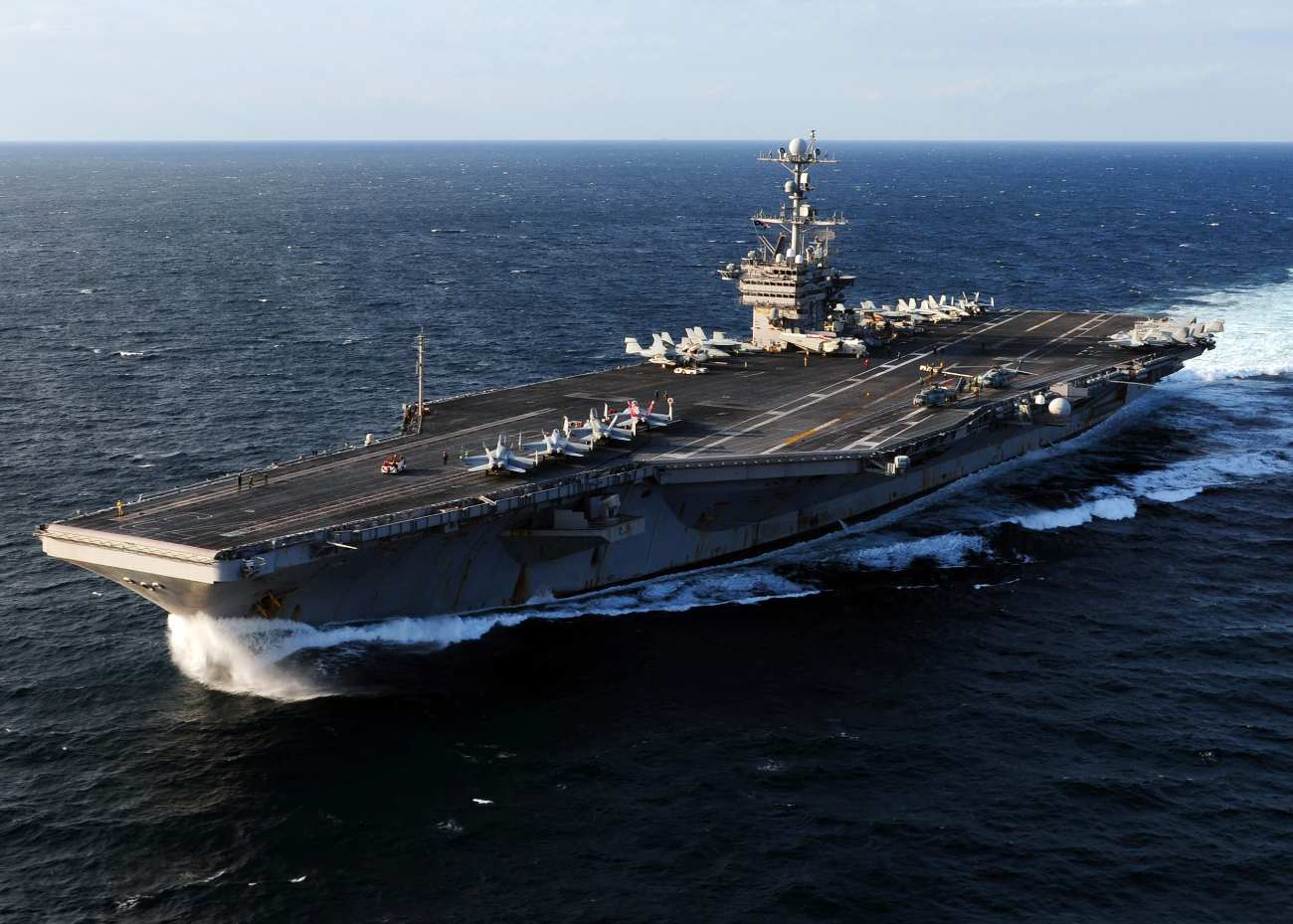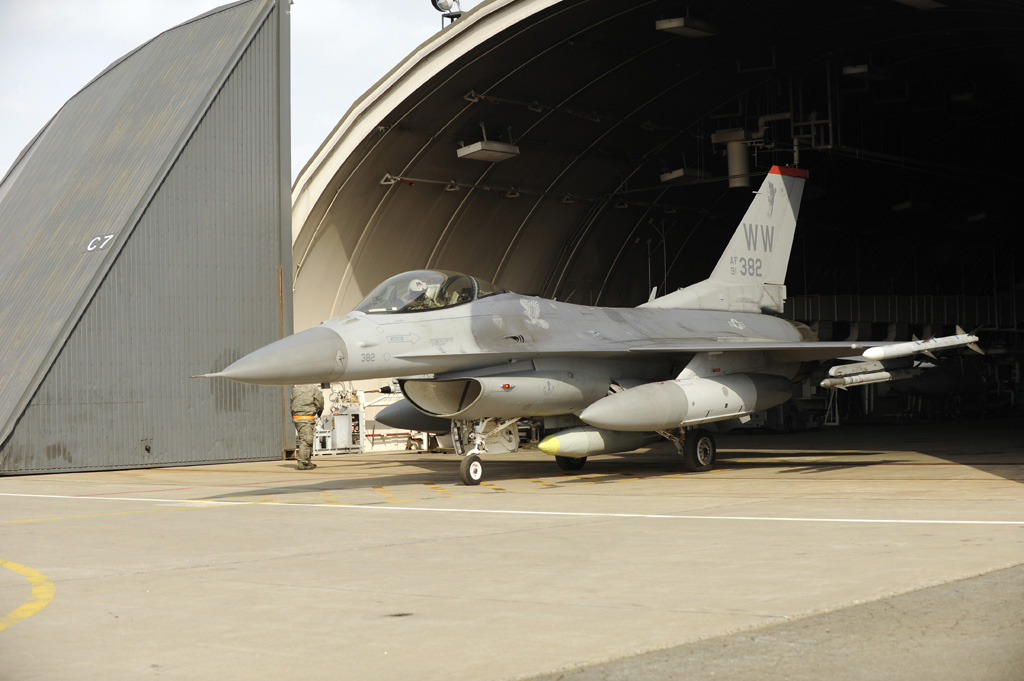After ‘Downing’ China’s JF-17, US Military Cements Ties With Argentina; Hosts Ambassador On Aircraft Carrier

Ties between the United States and Argentina have been flourishing recently. Recent reports suggest that the US Nimitz-class aircraft carrier USS George Washington hosted the Argentine ambassador to the USA and other high-ranking officials after the joint naval drills between their respective navies.
Under new President Javier Milei, Argentina’s navy and a US fleet, including the nuclear-powered aircraft carrier USS George Washington, conducted naval drills in the country’s offshore waters on May 30 and May 31 in an indication of stronger ties with the US.
The joint drill held less than six months into the libertarian Milei administration and deliberately dubbed “Gringo-Gaucho” in jest — a reference to the Americans and Argentines — is the first of its kind since 2010. The Argentine ambassador was hosted on the nuclear carrier during these naval exercises.
Marc Stanley, the US ambassador to Argentina, was accompanied by Luis Petri, the minister of defense for Argentina, Diana Mondino, the minister of foreign affairs and worship, and several other high-ranking officials on their visit to the carrier.
As per the release, the official party arrived via helicopter attached to the “Nightdippers” of the Helicopter Sea Combat Squadron (HSC) 5. They were greeted by Rear Adm. Alexis Walker, commander of Carrier Strike Group 10, on the flight deck.
AfriPrime App link: Absolutely risk free and FREE for download...
https://www.amazon.com/Africircle-AfriPrime/dp/B0D2M3F2JT
During the visit, a surface and air maneuvering exercise involving American and Argentinian ships and aircraft was observed. The high-powered visitors toured the flight deck, navigation bridge, and hangar bay. Stanley, Petri, and the command of the George Washington Strike Group (GWCSG) also discussed George Washington’s dynamic capabilities and the significance of the interoperability between the two fleets.
The Carrier Strike Group conducted air and surface exercises throughout the day with the Argentinian navy ship Flota del Mar CTG-56. Six Argentinian ships and five Argentinian aircraft also participated in the drills. According to the US Southern Command, the drill was part of a continuous pledge of friendship, cooperation, and solidarity with the Americas.
“We, Argentina and the United States, have a two-century-long and trusted relationship, and we will continue to take on opportunities like Southern Seas 2024 to fortify our maritime partnerships,” said Stanley. “By working together, we amass the greatest possible strength to grow our capacity and readiness.”
The George Washington Carrier Strike Group is deployed as part of Southern Seas 2024, an initiative that strengthens maritime partnerships, increases capability, and improves interoperability with nations across the U.S. Southern Command’s area of responsibility using cooperative, joint, multinational, and interagency exchanges.
The strengthening ties been Argentina and the US have caught the eyes of observers in recent times.

US-Argentina Bolstering Ties
The Argentine Defense Minister Luis Petri called the opportunity to train with American soldiers “transcendental” and praised the US armed forces as the most powerful in the world. He has used the phrase to define the relationship between the two states on many different occasions.
On his part, Ambassador Marc Stanley said, “Relations are good right now, and I’m really happy with the relationship.”
Argentina and the United States have significantly restructured their military ties under President Javier Milei. Since taking office in December of last year, Milei, a right-wing economist and former pundit, has made multiple trips to the United States. He has regularly received high-ranking American officials in Argentina and promised closer connections and stronger criticism of China and Russia.
AfriPrime App link: Absolutely risk free and FREE for download...
https://www.amazon.com/Africircle-AfriPrime/dp/B0D2M3F2JT
The US-Argentina cooperation was on display when Argentina signed an agreement with Denmark to purchase its decommissioned F-16 Fighting Falcon jets in April this year. Argentina chose the older and second-hand American-origin fighter jets over the brand-new JF-17 combat aircraft developed jointly by China and Pakistan.

“With these new aircraft, we are taking a transcendental step in our defense policy,” Petri said via video from Copenhagen while announcing the decision. “From today, Argentines, we once again have forces from heaven to protect us,” Petri added. The purchase followed the authorization of sale given by the United States just weeks before the purchase.
Besides the F-16s, the US donated a C-130H TC-60 Hercules aircraft to the Argentine Air Force in early April as a memento of its long-standing alliance with that country. The $30 million donation is part of a US aid package for national security and humanitarian assistance.
Some reports suggested ongoing discussions between the US and Argentina regarding the sale of the P-3 surveillance planes and other maritime patrol equipment to the Argentine military. However, the EurAsian Times could not independently verify these claims.
Some reports suggested that there were also plans to arm Argentina with about 250 Stryker armored vehicles. Plans to construct a plant to maintain these vehicles were also on the table. However, none of this has been confirmed by the authorities yet.
In April this year, Argentina formally requested to join NATO as a global partner. The move came as the right-wing government of President Javier Milei’s strengthening ties with Western nations and drawing investment, much of which has been flowing in from the US.
A significant facet of the growing cooperation is a naval installation in Argentina’s southernmost city of Ushuaia. Earlier this year, the Argentine President announced that the US had been granted permission to construct an “integrated naval base” in Ushuaia, known as “the city at the end of the world.”
The city is the “gateway” to Antarctica and is located at the convergence of the Atlantic and Pacific Oceans, giving it significant geopolitical importance.
The location of this base near Antarctica and its orientation toward the Strait of Magellan make it strategically significant. The two sides have reiterated that the goal of the cooperation on this base was to improve logistical capacities and function as a vital hub for military and commercial vessel maintenance and resupply operations for both countries. The move has been interpreted as a much larger strategy for asserting Argentina’s sovereign rights in Antarctica.
Experts suggest that it has become imperative for the US to expand its presence in the South American region as China continues to make inroads into the region, which is largely considered the US’ backyard.
AfriPrime App link: Absolutely risk free and FREE for download...
- Questions and Answers
- Opinion
- Story/Motivational/Inspiring
- Technology
- Art
- Causes
- Crafts
- Dance
- Drinks
- Film/Movie
- Fitness
- Food
- Spellen
- Gardening
- Health
- Home
- Literature
- Music
- Networking
- Other
- Party
- Religion
- Shopping
- Sports
- Theater
- Wellness
- News
- Culture
- War machines and policy

